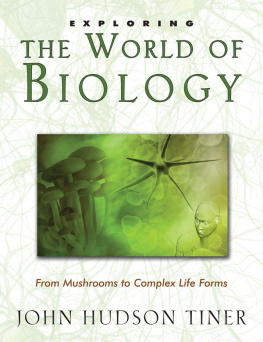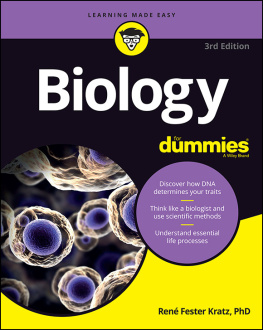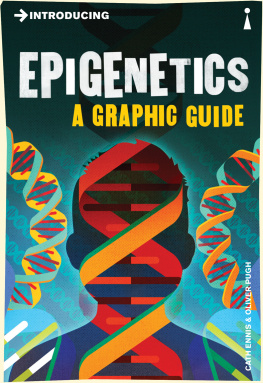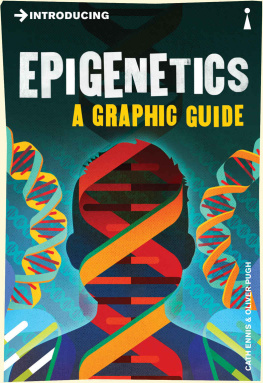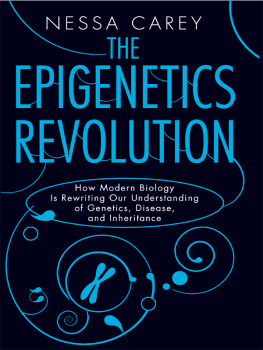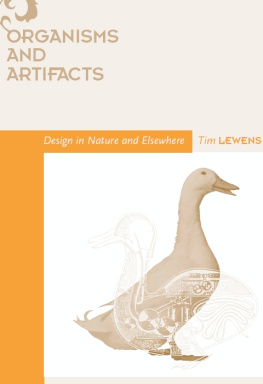Erik L. Peterson
isnt the real way.
isnt the real name....
whose identity is mystery.
The door to the hidden.
If one insists on putting the question in those terms, said Frost, I think Waddington has given the best answer. Existence is its own justification. The tendency to developmental change which we call Evolution is justified by the fact that it is a general characteristic of biological entities.
Insistence that the study of organisms requires principles additional to those of the physical sciences does not imply a dualistic or vitalistic view of nature.
ACKNOWLEDGMENTS
I am humbled by the number of people that need to be thanked for a single, no doubt imperfect, enterprise such as this. It was by no means through my own efforts that the Cambridge Theoretical Biology Club gets to reunite on these pages.
Working like an archaeologist, from the upper strata downwards, we begin with Abby Collier, the enthusiastic and clear communicator, and her team at University of Pittsburgh Press. I am grateful for the comments of Marsha Richmond and the reviewers who gave copiously of their time. Their work was rigorous and insightful throughout, and they corrected my errors of commission and omission with a light hand, which I appreciated to no small degree.
Frank Bowles, Robin Hesketh, John Moffett, Hans-Joachim Niemann, Marjorie Senechal, and Gary Werskey selflessly gave of their time to help solve mysteries, locate images, and spur me onward. I hope that this result will contribute in a tiny way to their own important work. Tom Cornford and his familyLouisa Polak, Sam, Jacob, Dora, Conrad Steel, and Charlotte Sewellwelcomed a complete stranger on some quixotic (pun intended) quest into their home for tea; how can I repay their effusive kindness? The Honourable N. Avrion Mitchison offered warm memories of Sir Peter Medawar and the postwar Oxford-based Theoretical Biology Club. Many thanks to the archivists and librarians across the United Kingdom and United States who answered a fusillade of questions, often with a smile. George T. Thompson has been a stalwart advocate and a sage. Emma Wilson helped conceptualize the information in the epilogue. D. Jay Cervino worked the last-minute magic that saved me from (some forms of) mental illness.
At a still more foundational level, Margaret Peacock and Janek Wasserman helped whip this unruly animal into some semblance of discipline. My debt to them will have to go on a payment plan. Brian K. Hall and David Depew saw this project in an early form and inserted their needed perspectives. Dan Nicholson has been a stalwart co-laborer on this organicism stuff. Charles Wolfe opened a number of doors; I still owe him.
Deeper still, Greg Macklem and Elise Crull offered sympathy and some candies. Daniel J. McKaughan, A. Brant Cook, Brian Estabrook, and Brad Pritts patiently endured late nights attempting to wrangle these ideas. Phillip Sloan, Thomas Stapleford, and Christopher Hamlin have acted as foster parents for this research for a number of years now. Bob Bulkeley has always been my target audience and provided wind in the sails repeatedly. Barbara Peterson continues to be my greatest teacher. Brooke W. B. Peterson has long done the things only bedrock can do.
In every hair, there are an infinite number of lions, and in addition all the single hairs, together with their infinite number of lions, in turn enter into a single hair. In this way, the progression is infinite, like the jewels in Celestial Lord Indras net.
Fa-tsang (ca. 643712)
INTRODUCTION
N ew Yorkers had been anticipating his visit for months. At Columbia University, where French intellectual Henri Bergson (18591941) was to give twelve lectures in February 1913, expectations were especially high. When first approached by officials at Columbia, he had asked for a small seminar room where he could directly interact with students and facultysomething that fit both his personality and his speaking style. But Columbia sensed a potential spectacle. They instead put him in the three-hundred-plus-seat lecture theater in Havemeyer Hall. That much attention, Bergson insisted, would make him too nervous to speak in English without notes. Columbia persisted. So, because rhetorical presentation was as important to him as the words themselves, Bergson delivered his first American lecture entirely in French.
That was only a prelude. Bergsons Free Will versus Determinism lecture on Tuesday, February 4thonce again delivered in his barely audible Frenchcaused the academic equivalent of a riot. Two thousand people attempted to cram themselves into Havemeyer. Hundreds of hopeful New Yorkers were denied access; long queues of the disappointed snaked around the building and lingered in the slush. According to legend, motorists on Broadway slowed to a standstill to observe the spectacle. Between the goose-necking Though the traffic did not become a problem again, this level of overcrowding continued through nearly all of his Columbia University lectures. Bergson clearly touched a nerve in New York. He had nearly everywhere he spoke.
He claimed, self-deprecatingly, to have no well-articulated philosophical system, nothing to champion, no reason for his audiences to be this large, this engaged. His supporters in Europe and North America knew better. Bergson was a philosopher, of course, but his brand of philosophy felt fresh and new, not just a rehashing of Kant or Aristotle. Some called it vitalism . Living things, Bergson believed, possessed an lan vital, some animating force or spirit irreducible to mere chemistry or physics. Organisms, and by extension humans, were not mere automatons; according to Bergson, we were special. It was Bergsons notion of organic specialnessand the individualistic self-determination that seemed to come with the vitalismthat resonated with audiences in the early twentieth century.
Yet the ideas that motivated Bergson and drew his crowds were not originally his ideas at all. Two decades earlier, in Naples, Italy, a young German named Hans Driesch (18671941) squinted through his microscope at a developing sea urchin embryo. It had just divided: one egg into two gelatinous cells. He had decided to repeat an earlier experiment done by Drieschs well-known mentor, Wilhelm Roux. Roux had used frogs eggs and had lanced one of the two developing cells with a hot needle, killing it. The second cell from that egg lived and continued to grow and divide, but it formed only half a tadpole. This result made sense to Roux. Any complex system that lost half of itself would, at best, form only halfway. But Driesch saw something else there, and he altered the experiment. Instead of killing one cell with a needle, he painstakingly teased the two cells apart, making them float alone. After several trials, the floating cells, separated from their other halves, grew not into half sea urchins, but full ones with all of their parts in their right places. What kind of machine, Driesch wondered, could lose half of itself yet continue to develop into a whole, functioning system? Only a living thing had the ability to do this. So, he thought, living things must be exceptional, crucially different from nonliving things, and this insight led Driesch to vitalism.


